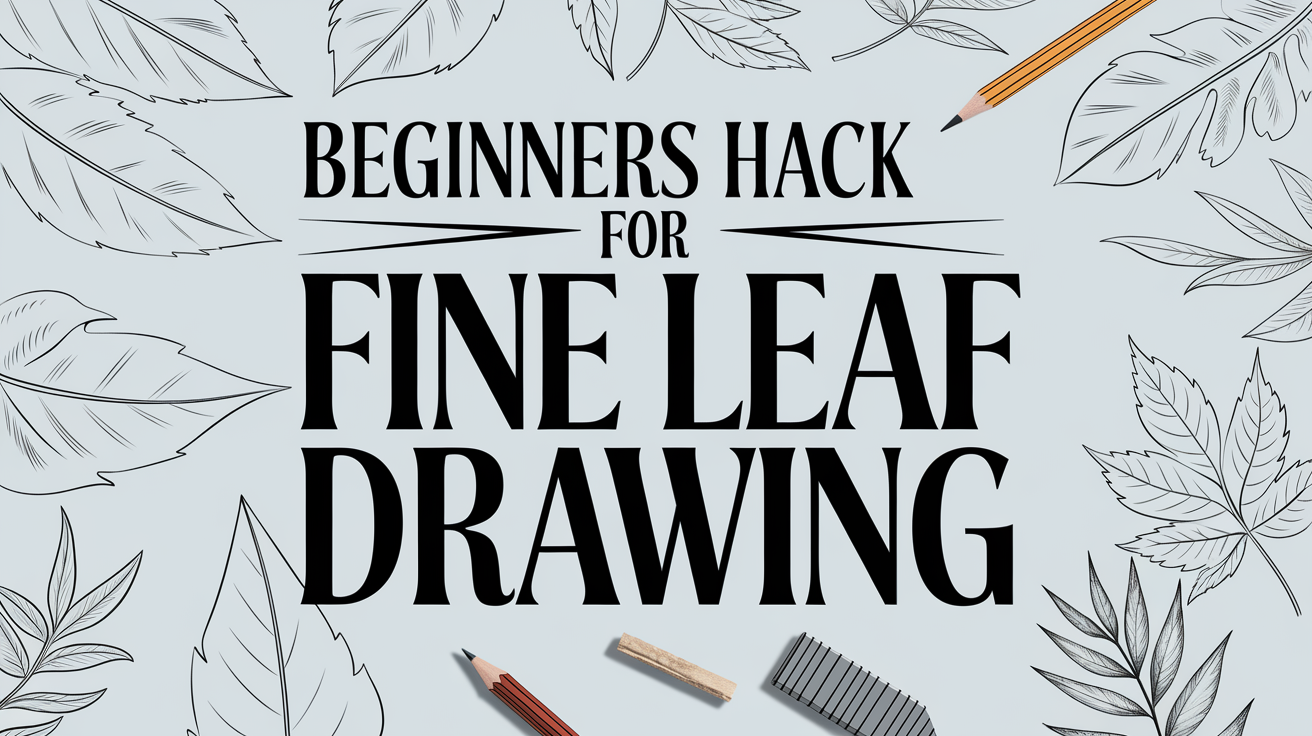Many people think leaf drawing is hard and give up before they start. But what if someone said it’s easier than they think?
Instead of spending years learning to draw perfect leaves, anyone can use a few simple hacks that make leaf drawing fun and easy. These techniques help everyone create beautiful botanical art, even if they’ve never picked up a pencil before.
By the end of this blog, readers will know exactly how to draw leaves that look real without frustration. They’ll have the skills to create their own leaf art at home with basic supplies.
Ready to start a leaf drawing quest? Let’s see how those pencils can turn blank paper into remarkable leaf art that will make friends ask, “Did you really draw that?”
Leaf Drawing Tips for Beginners
For newcomers, starting with leaf drawing can feel overwhelming. The good news is that anyone can learn with a bit of guidance.
The following tips will help beginners create beautiful leaves with minimal frustration and maximum enjoyment.
1. Start with basic shapes: Beginners should begin by breaking down leaves into simple shapes like ovals, triangles, and hearts. They can sketch these shapes lightly as the foundation before adding details. This approach makes complex leaf structures much more manageable.
2. Observe real leaves: Looking at actual leaves helps artists notice important details. They can collect different leaf types and study their veins, edges, and overall structure. Real-life references are always better than imagination when learning.
3. Practice vein patterns: The veins of a leaf tell a story about its structure. Beginners should start with the main center vein, then add smaller veins branching outward. Light, thin lines work best for creating natural-looking leaf veins.
4. Focus on outlines: Creating clean leaf outlines builds confidence. Artists can work on drawing smooth, flowing lines that capture the leaf edge details like serrations or smooth curves. Taking time with outlines pays off in the final result.
5. Work with light layers: Starting with light pencil strokes allows for easy corrections. Beginners can gradually build up darkness where needed. This technique gives greater control and prevents the heavy, dark lines that often mark beginner drawings
Easy Steps to Draw Different Types of Leaves
If you’re looking for a fun and relaxing way to express your creativity, drawing fine leaves is a perfect activity to begin with. Whether you’re adding detail to a bullet journal or just doodling for fun, leaves can provide a simple yet therapeutic drawing experience.
With a few simple steps and basic tools, you can create beautiful and intricate leaf designs that are sure to impress. Let’s get into these easy, beginner-friendly instructions for drawing fine leaves with warmth and confidence!
Step 1: Start with a Basic Leaf Shape
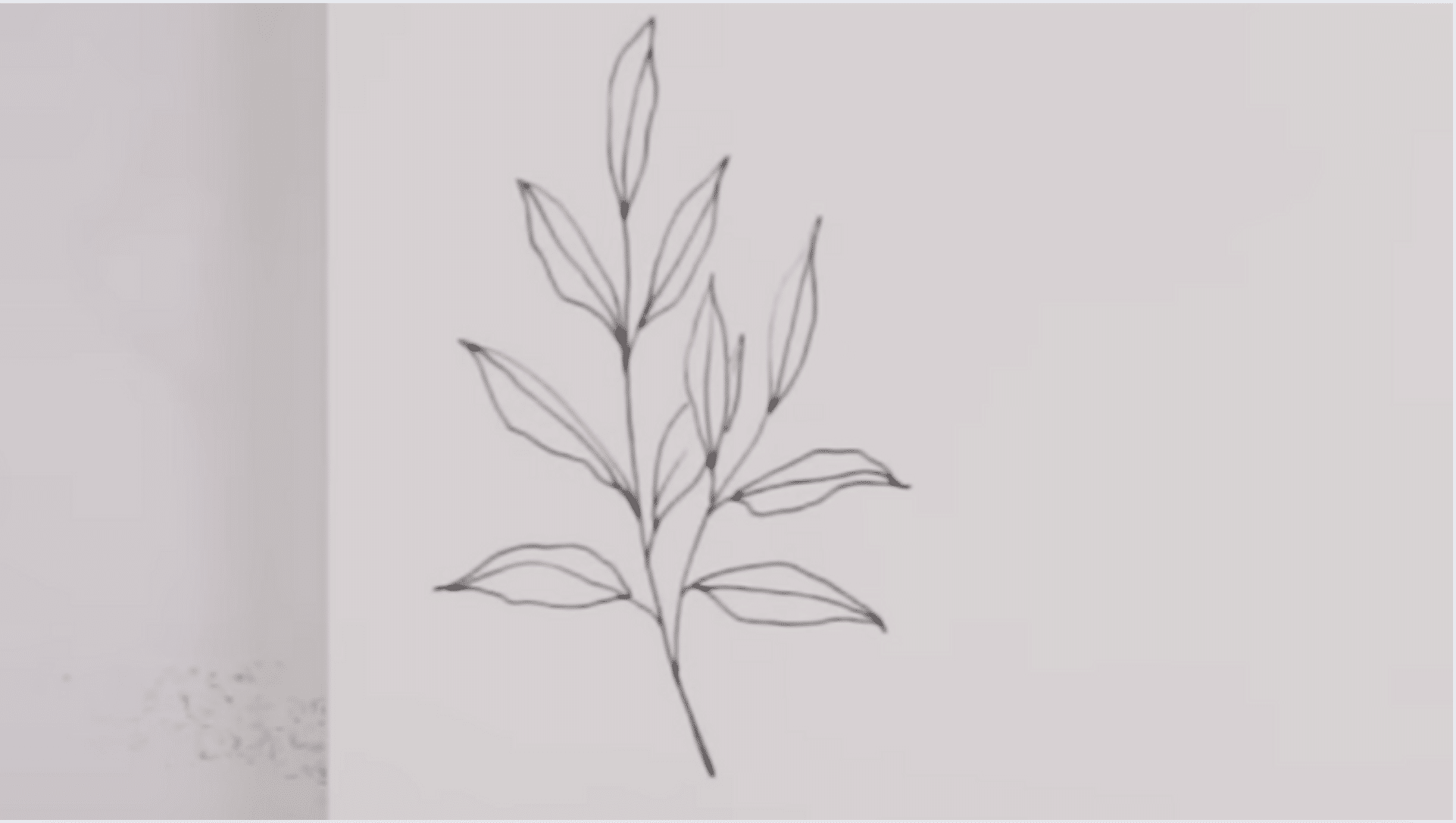
Begin by drawing a simple stem as the foundation for your leaf. The stem can vary in length depending on how big or small you want the leaf to be. From the stem, draw an oval or elongated shape for the leaf. Keep the edges soft and rounded, but you can add a slight point at the tip to create more variety.
To make your leaf look more realistic, gently curve the edges of the leaf as if the leaf is slightly curling inwards. Once the main shape is done, you can add a line down the middle to represent the leaf’s veins.
Step 2: Add Multiple Leaves to the Stem
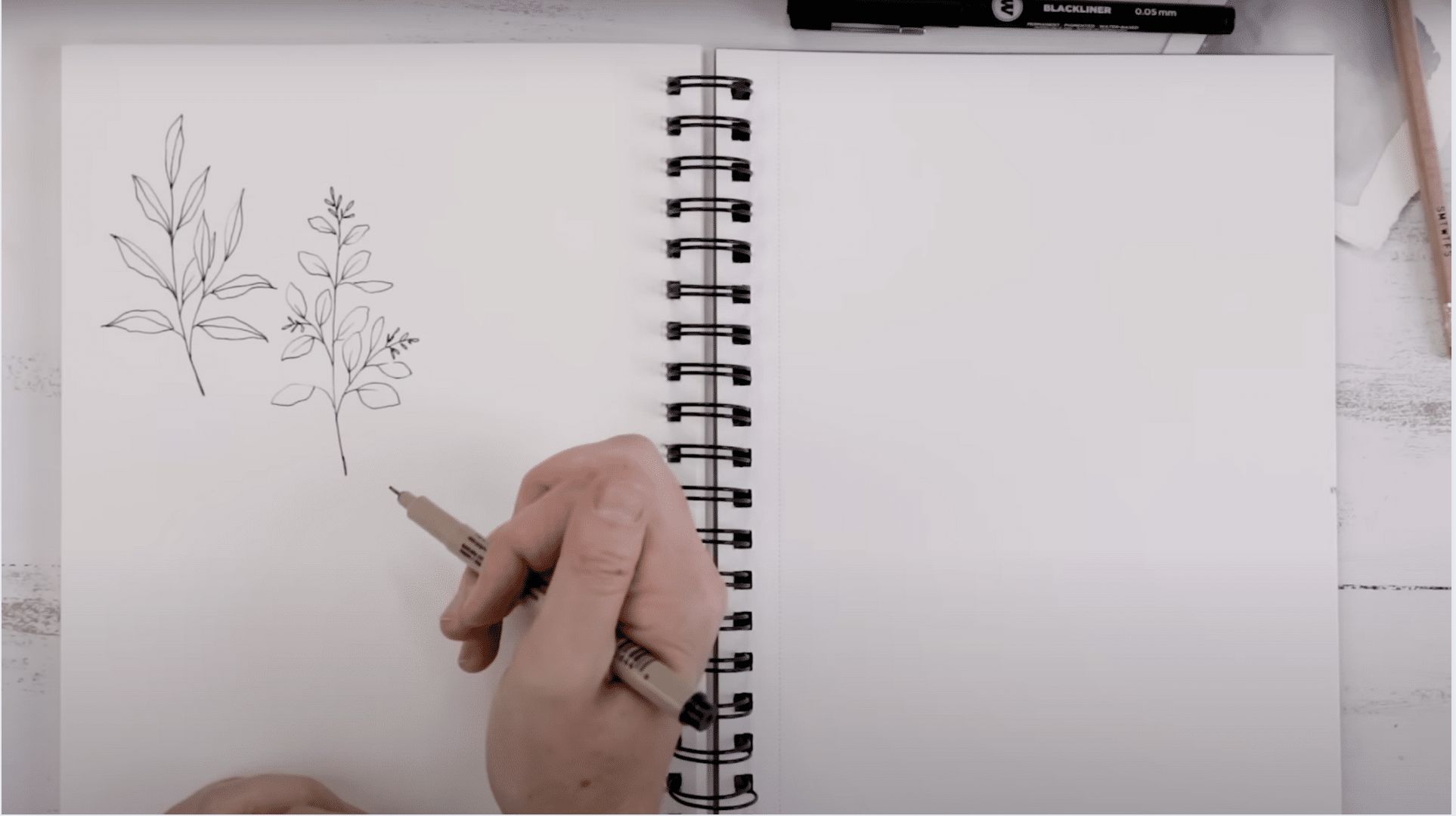
Extend the stem and add more leaves along its length. To make the drawing more spirited, vary the size and orientation of each leaf. Here’s how you can do this:
- Draw smaller leaves near the top and larger ones toward the bottom.
- Make the leaves face different directions for a natural look.
- Arrange leaves in pairs or threes for added variety.
- Overlap some leaves slightly to create depth.
This technique adds complexity and gives the drawing a more lifelike feel.
Step 3: Experiment with Fern-like Leaves
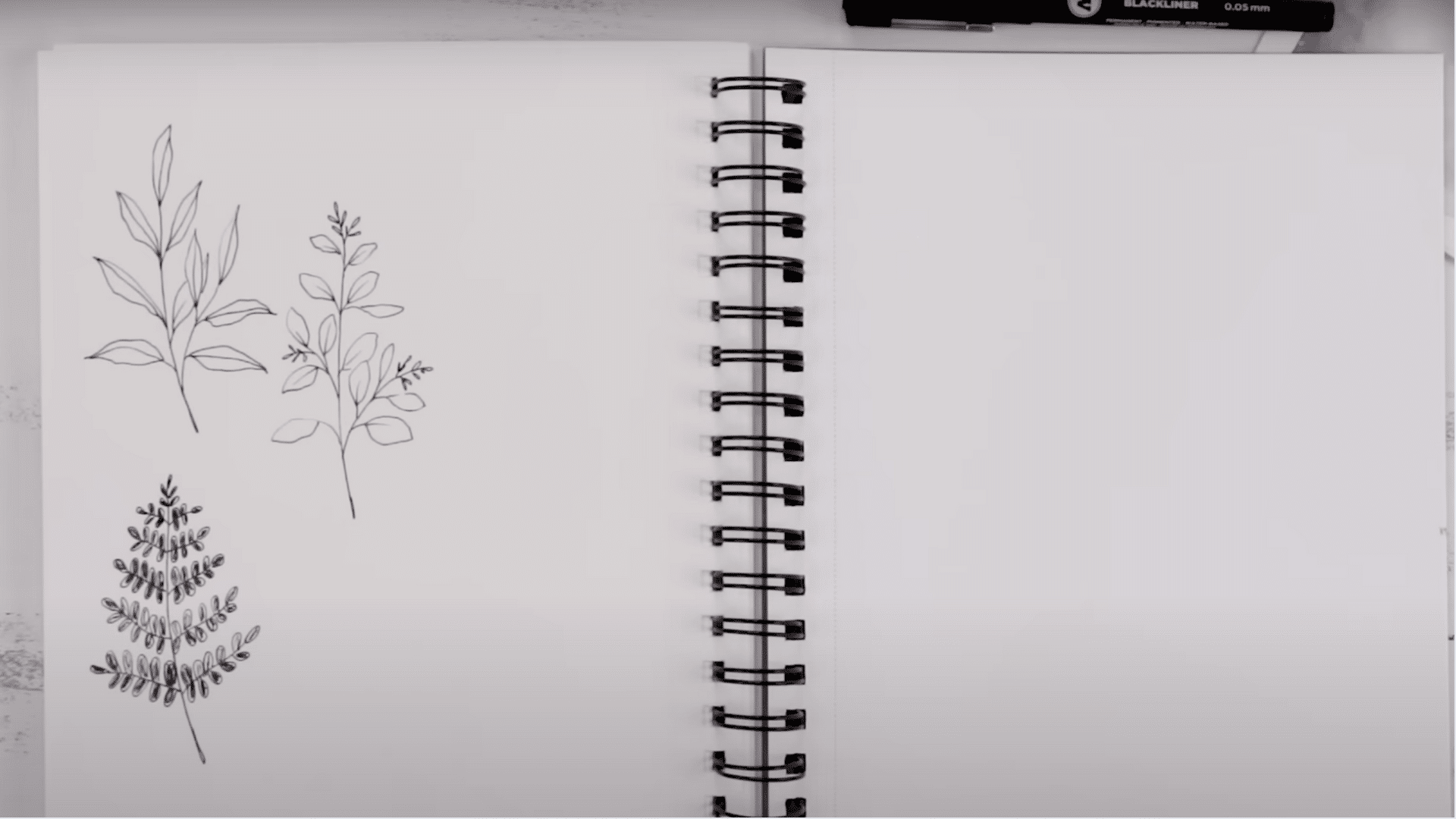
To create fern-like leaves, start with a central stem and add small pairs of leaves on each side. As you go down the stem, make the pairs of leaves longer and larger. With each new set of leaves, extend the branches outward at an angle, adding more and more leaves as you go along.
Ferns have a delicate, airy feel to them, so don’t worry if the leaves are not all perfectly aligned. Let the shapes flow naturally as you work through the branches.
Step 4: Draw a Simple Eucalyptus Leaf
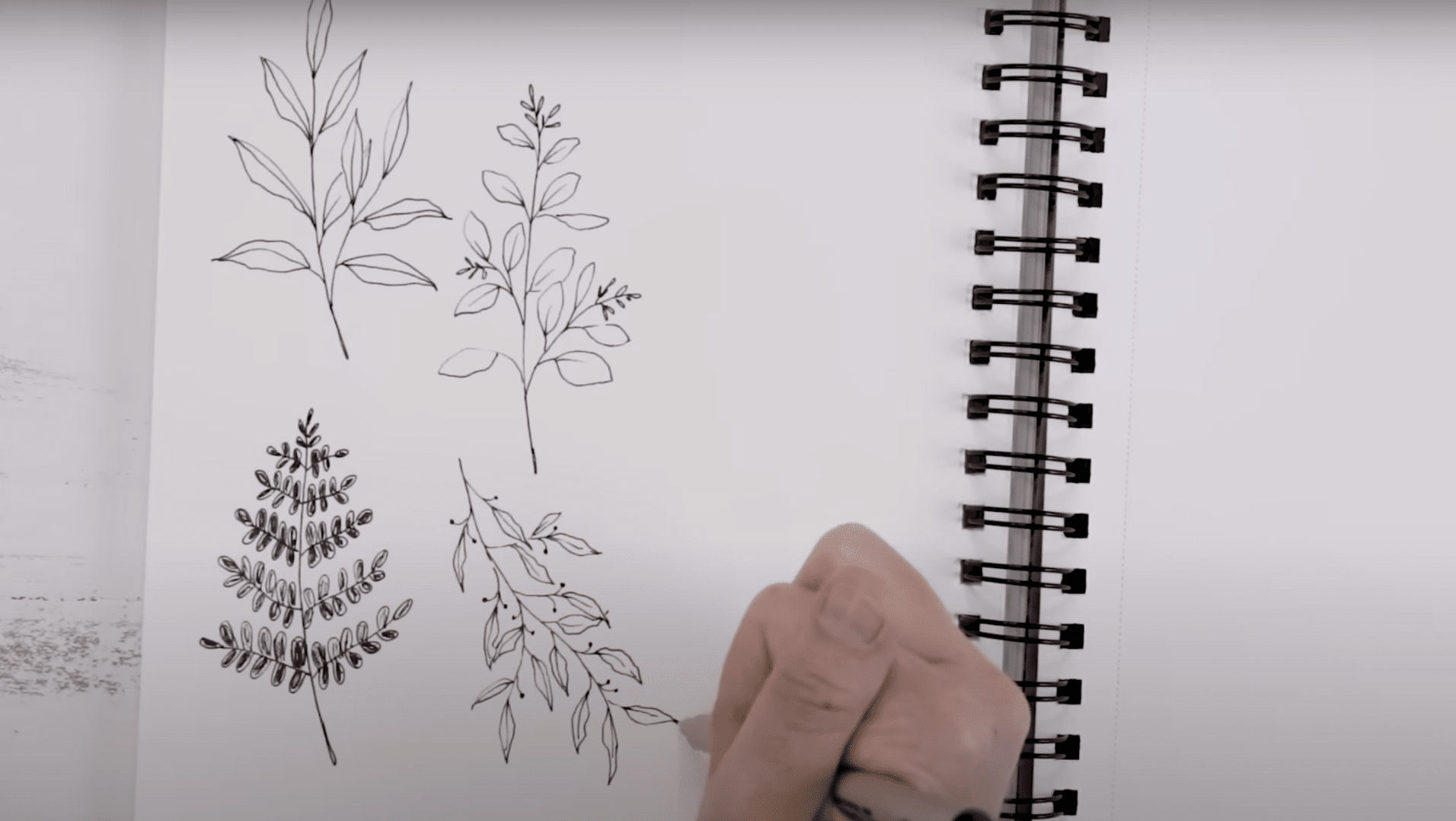
Start with a straight stem and attach small, oval-shaped leaves along its length. You can vary the size of the leaves as you move down the stem:
- Make the leaves larger near the base and smaller at the top.
- Add tiny seed-like dots at the base of each leaf for extra detail.
- Overlap leaves for a natural, layered effect.
- Experiment with different angles for the leaves to add visual interest.
This approach gives the eucalyptus a distinctive and soft appearance.
Step 5: Draw Round or Oval Leaves with Veining
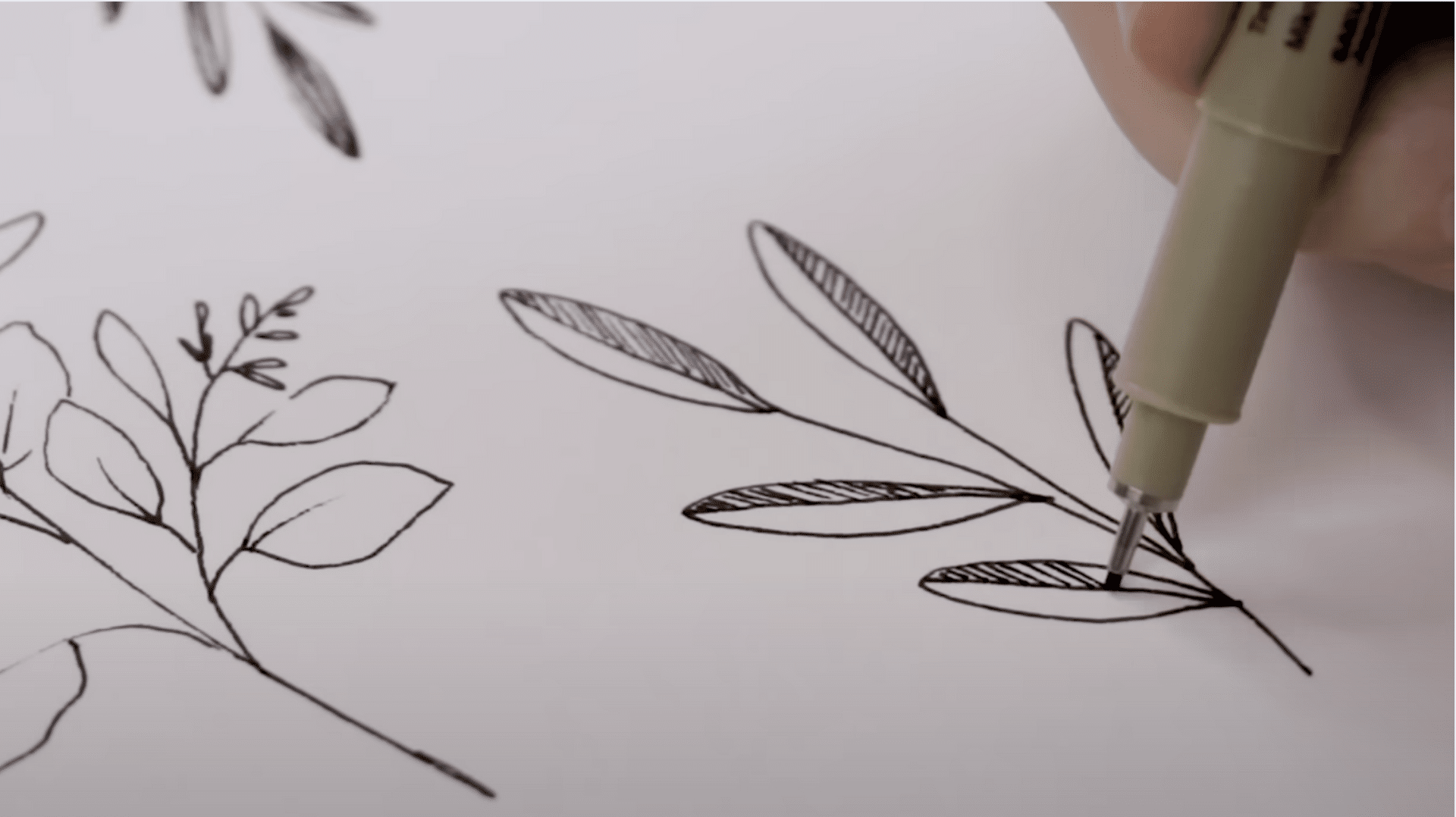
For a more intricate leaf, try drawing round or oval leaves with defined veining. Start by sketching a simple oval shape, then add parallel lines extending from the center of the leaf outward.
These lines represent the veins that give the leaf its texture. Add additional veins branching out from the center. Darkening the veins with a finer pen or pencil can create a more realistic effect, adding depth to the drawing.
You can also experiment with different shapes, such as heart-shaped or jagged edges.
Step 6: Create Pointed or Jagged Leaf Edges
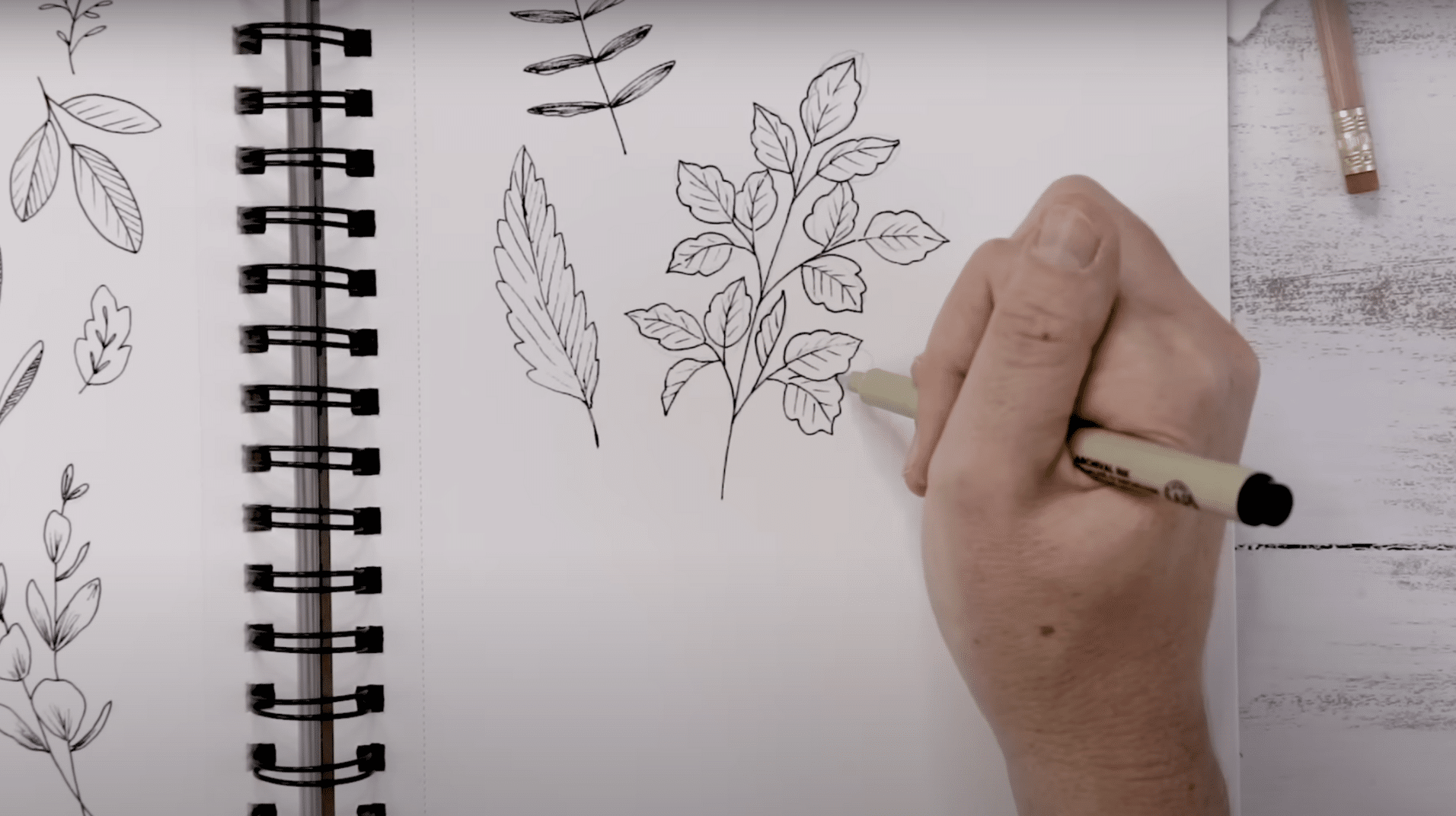
For a more dramatic look, draw leaves with sharp, jagged edges. Follow these steps:
- Start with an elongated leaf shape, then add points along the edges.
- Create irregular points for a more organic, natural look.
- Add veins in the center and smaller veins branching out.
- Use shading to enhance the texture, darkening one side of the leaf.
This technique gives the leaf a bold, textured look that stands out in your drawing.
Step 7: Add Color and Shading for Final Touches
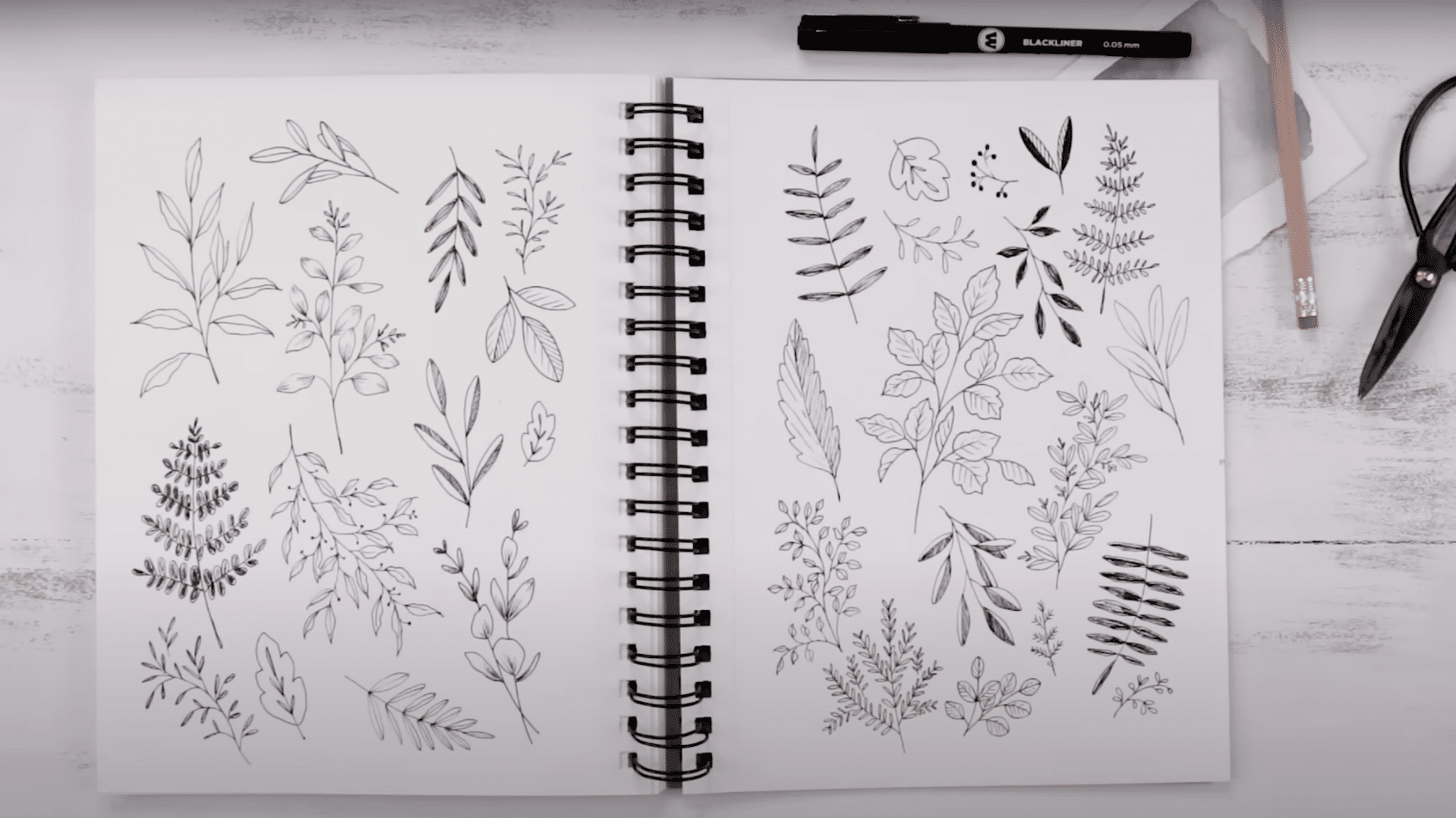
Once you’ve completed your leaf drawing, add color using colored pencils, markers, or any other medium you prefer. Start by coloring the leaf base with a light green and gradually layer darker shades along the veins or edges.
You can also add subtle shading to areas where light wouldn’t hit directly to give the leaf more depth. If you want, you can use a fine pen to outline the edges of the leaf or add extra details like small dots or lines to give the leaf texture.
Creative Leaf Drawing Ideas To Try Today
Drawing leaves offers endless creative possibilities beyond basic sketches. Artists looking to expand their skills can try these fresh ideas to make their leaf art more interesting.
These projects help build confidence while creating beautiful pieces worth sharing or displaying.
Leaf Portraits
Pattern Collections
Seasonal Transitions
Negative Space Techniques
Mixed Media Combinations
Abstract Leaf Forms
Letter or Number Integration
Mood Expressions
Botanical Illustrations
Mandala Creations
Landscape Silhouettes
Summing Up
Leaf drawing isn’t just a skill; it’s a way to connect with nature through art. This guide has shown beginners that creating beautiful leaf art doesn’t require special talent, just practice and the right techniques.
Starting with basic shapes, paying attention to details, and gradually adding texture alters simple sketches into lifelike botanical art. The creative ideas shared here give artists plenty of directions to explore once they master the basics.
Every artist’s quest with leaf drawing will be different. Some might prefer scientific accuracy, while others may enjoy abstract interpretations. The important thing is to enjoy the process of observation and creation.
With these beginner hacks and pro tips, anyone can now pick up a pencil and capture the quiet beauty of leaves in their sketchbook.

